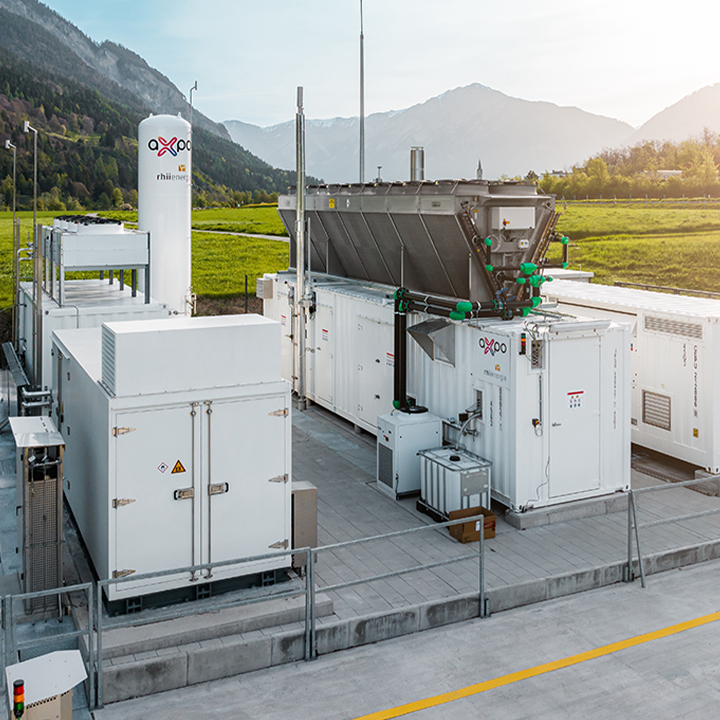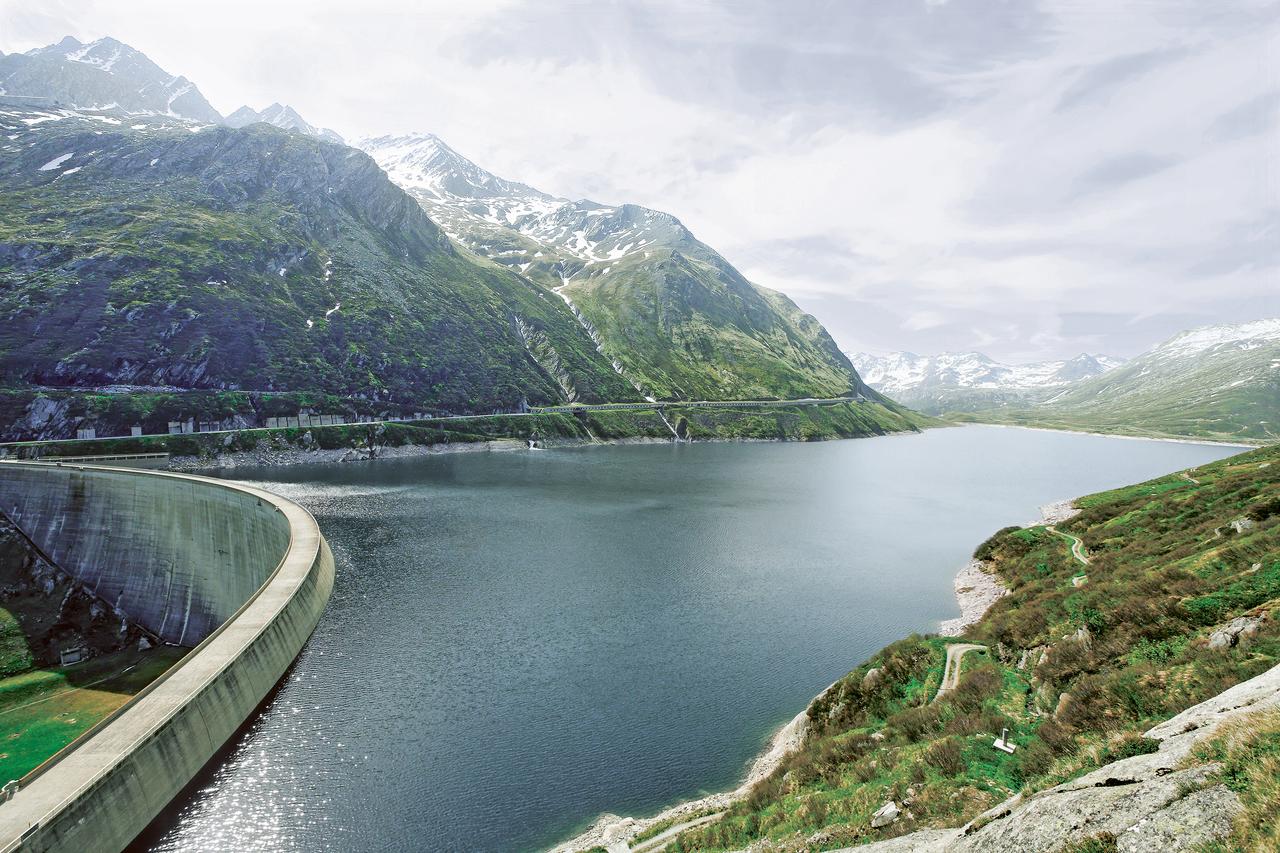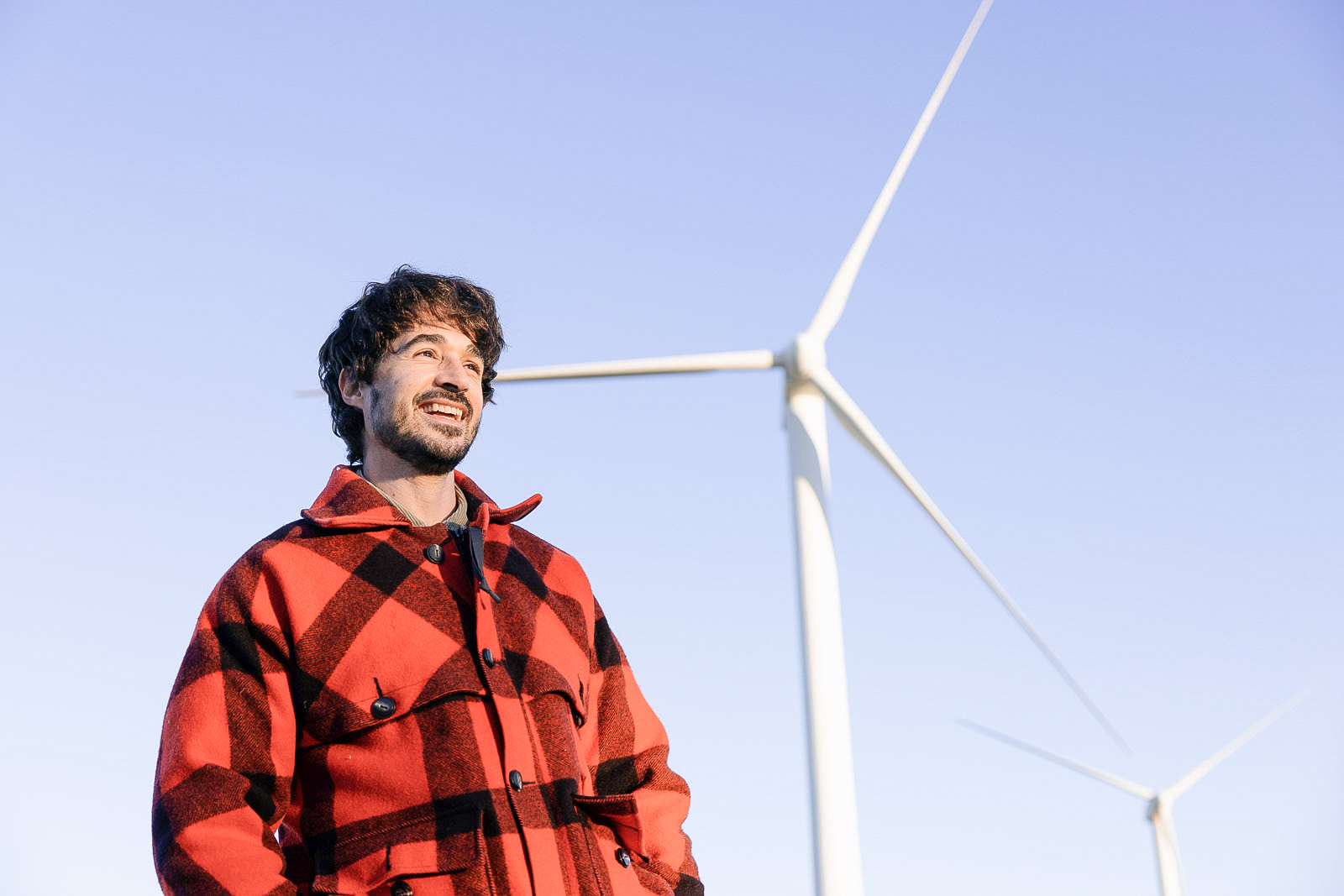

Hydrogen A pillar of the energy transition
Hydrogen (H2) has an important part to play in the energy transition. Firstly, it enables the decarbonisation of sectors such as transportation – freight and air traffic, for example –, industries like steel and fertiliser production, and power generation. Secondly, hydrogen can be used as an energy source to store electricity from renewable energies and transport it over long distances. This allows renewable energy to be produced at the most favourable locations and decouples it from immediate consumption. These advantages have made hydrogen a core component of energy strategies in the EU and many other countries.
How hydrogen works
Hydrogen (H) is the most common element in the universe, a component of water (H2O) and practically all organic compounds.
Hydrogen is also the chemical element with the lowest atomic mass. However, while atomic hydrogen (H) does not occur in our everyday lives, molecular hydrogen (H2) does, as an invisible, colourless, odourless and non-toxic gas (learn more about the chemical element on Wikipedia). It is 14 times lighter than air and has a very low volumetric energy density (energy per cubic metre). Hydrogen contains a lot of energy per mass (calorific value), about three times more than petrol and seven times more than wood pellets. Hydrogen can be obtained in various ways. The most common method currently is through the so-called ‘steam reforming’ of methane (CH4), also known as natural gas. During this process, the gas is heated, broken down and reacts with the water vapour, creating what is known as grey hydrogen and carbon dioxide (CO2). If the resulting CO2 is captured and permanently stored, the hydrogen is called blue and is correspondingly low in CO2, although this latter process is comparatively rare nowadays.
Green hydrogen: CO2-free and climate-neutral
Another method of producing hydrogen uses water rather than natural gas as the starting material. Using electrolysis, the water is split into hydrogen and oxygen. If the electricity used is renewable, the hydrogen obtained in this way is called green. The following video explains how green hydrogen is produced, its significance, and what Axpo is doing in this area.

While both transporting and storing hydrogen is cumbersome, it can be further processed into products that are easier to handle. One possibility is to remove nitrogen from the ambient air and process the hydrogen into ammonia. Another option is to remove CO2 from the environment and use it to convert the hydrogen into either methane or methanol. These derivatives can be used either as energy sources or chemical reactants, starting materials in the production of other chemical products.
But it is also possible to convert the hydrogen back into electricity, which we explain in the next section. However, it should be emphasised that each conversion step is associated with losses in efficiency.
Conversion into electricity
The reconversion of hydrogen into electricity can be done either thermomechanically or in a fuel cell. This fuel cell is an electrochemical device for directly converting the chemical energy of a fuel into electricity.
Similar to batteries, fuel cells produce direct current at low voltage. A battery uses a chemical substance that is contained in the cell block itself. With fuel cells, on the other hand, the fuel is continuously supplied to the cell block, similar to petrol or diesel fuel in an internal combustion engine.
Axpo's role
-
Development of the hydrogen economy
Axpo wants to actively promote the development of the hydrogen economy in Switzerland. This requires expertise in the planning of H2 production plants, their operation, the optimisation of their use and the marketing of hydrogen. Axpo acts as a producer of green hydrogen and also utilises its expertise as a competent project partner.
-
Planning and building support
Axpo can support your hydrogen production projects, whether stand-alone or combined with a dedicated solar or wind power park. We are experienced in the dimensioning, planning and construction of energy parks and electrolysers, and also advise on other services relevant to hydrogen production.
-
Sourcing electricity and guarantees of origin
Axpo can supply the electricity and certificates you need. Clients can either choose a dedicated power plant as the source, or secure their electricity in a structured manner through a power purchase agreement (PPA).
-
Optimising electrolysis
Approximately 75% of hydrogen production costs depend on the price of electricity. That’s why the optimisation of energy use is essential. Axpo makes the best use of your electrolyser on the market, keeping production costs low or generating additional income from the unused electricity.
-
Marketing hydrogen
We operate in around 40 markets internationally and can purchase and market the hydrogen you produce.
White paper & more about hydrogen
Hydrogen (H) is the most common element in the universe - it is a component of water (H2O) and practically all organic compounds.
You can find out more about the role and potential of hydrogen in Switzerland in our white paper.
- White Paper in PDF format View Send email Download
Wildegg-Brugg power plant (up to 15 MW)
Another climate-friendly hydrogen production plant is to be built at the Wildischachen industrial site in Brugg (AG), which will also be the largest hydrogen plant in Switzerland. Axpo, Voegtlin-Meyer, IBB Energie AG (IBB) and the city of Brugg have signed corresponding declarations of intent. Axpo plans to supply clean hydrogen from domestic hydropower directly to the nearby Voegtlin-Meyer refuelling station via pipeline. From there, the green hydrogen will be made available to private users and used for the buses operated on behalf of PostBus AG. Around 300 lorries, Postbuses or buses can be powered with the amount produced each year.
Axpo and SGV plan hydrogen passenger ship on Lake Lucerne
Axpo is the majority shareholder in the company H2Uri, which is building a hydrogen production plant in Bürglen in central Switzerland. The regionally produced hydrogen will be used to power a passenger ship operated by Vierwaldstättersee-Schifffahrtsgesellschaft (SGV) AG on nearby Lake Lucerne. In addition to Axpo and SGV, EWA-energieUri and AVIA Schätzle are also involved in the project. The hydrogen plant is to be built in Bürglen in the canton of Uri and is expected to start producing hydrogen in 2025. Among other things, the plant's output will be used to power the first hydrogen passenger ship on Lake Lucerne. The conversion of the SGV ship "MS Saphir" to a hydrogen fuel cell system will be completed by autumn 2025.
43-percent share in Swiss Green Gas International
Axpo holds a 43% interest in Swiss Green Gas International, in short SGGI. The joint venture company founded in 2020 plans and realises power-to-X facilities in Northern Europe (more on power-to-X on Wikipedia). The plants produce hydrogen and synthetic methane (green gas) from renewable electricity. This will promote the urgent, rapid exit from fossil energy sources. Other SGGI shareholders are Holdigaz SA, which primarily supplies the Cantons of Vaud, Valais and Freiburg with gas, and Nordur Group GmbH, a development and investment company.
Valle Peligna in Italy (30 MW)
Together with Infinite Green Energy (IGE), Axpo is developing one of the largest green hydrogen plants in Italy. This is in Valle Peligna in the Abruzzo region. Specifically, up to 12 tonnes of hydrogen per day can be supplied for energy-intensive industrial and mobility markets. The project envisages a 30 MW electrolyser powered by a 45 MWp solar plant. The 30 MW electrolyser can produce up to 4,200 tonnes of hydrogen per year. This corresponds to around 18 million litres of diesel fuel that can be saved every year. The plant is expected to be connected to the grid in the second half of 2025.
"Arve Hydrogène Mobilité" in France (5 MW)
By founding the project company "Arve Hydrogène Mobilité", Axpo is investing in a project for the production and distribution of hydrogen in France. Specifically for the mobility sector in the French Arve Valley. The first hydrogen vehicles should be able to refuel at an H2 filling station as early as the first quarter of 2025. The project is being supported by various local partners, including hydrogen refuelling station developer Ataway and Jean Lain Mobilités, a leading car dealer and specialist in mobility solutions in the Alpine region. An electrolyser capacity of up to 5 MW will be gradually installed by 2030 to meet the growing demand for carbon-free mobility in the region.
Pilot project in Italy together with ABB
Together with ABB, Axpo is planning the development of a pilot project in Italy. Under the project, technologies along the entire green hydrogen supply chain will be researched and tested for production feasibility. The memorandum of understanding also includes participation in research and development projects financed by the European Union, as well as financing support.
Contact us
Whatever energy service you need, we can provide you with competent and sound support. We would be happy to explain what we can do for you in a personal meeting.
Hydrogen from A to Z
Hydrogen is interesting for two main reasons, firstly as a chemical feedstock and secondly as an energy carrier. Today, hydrogen is used almost exclusively as a chemical feedstock (e.g. for the production of fertilisers or in refineries).
Consequently, two aspects need to be addressed with regard to decarbonisation:
- In existing applications, grey hydrogen must be replaced with climate-neutral hydrogen.
- Its potential as an energy source must be utilised.
Hydrogen is to be used where electrification as a replacement for fossil fuels is not economically or technically feasible.
Ammonia is a useful product made from hydrogen. The combination of water and nitrogen is mainly used as a fertiliser, but is also used in the chemical industry, for example in plastics production.
Like electricity, hydrogen is not green per se. Depending on how it is produced, hydrogen is named after a different colour. You can find an overview of this here:
Green hydrogen is produced through the electrolysis of water. Electricity generated from renewable energy sources like hydropower, wind and solar energy is used. As a result, green hydrogen is CO2-free.
Grey hydrogen is produced by means of steam reformation, usually from natural gas. Some 10 tonnes of CO2 per tonne of hydrogen are produced. The unused CO2 is released into the atmosphere. Steam reformation is the most widely used process in Europe.
Blue hydrogen is grey hydrogen, which captures CO2 during the production process and then stores it in the ground (carbon capture and storage CCS).
Turquoise hydrogen is hydrogen that is produced through the thermal decomposition of methane (methane pyrolysis). Solid carbon is produced instead of CO2. The methane pyrolysis process is still in the development stage.
Yellow hydrogen is hydrogen that is generated from the power mix in the existing grid. In Switzerland, this is mainly electricity from hydro and nuclear power.
Pink hydrogen is produced with electricity from nuclear power. Nuclear power is nearly CO2 free in operation, but its energy source is not renewable.









